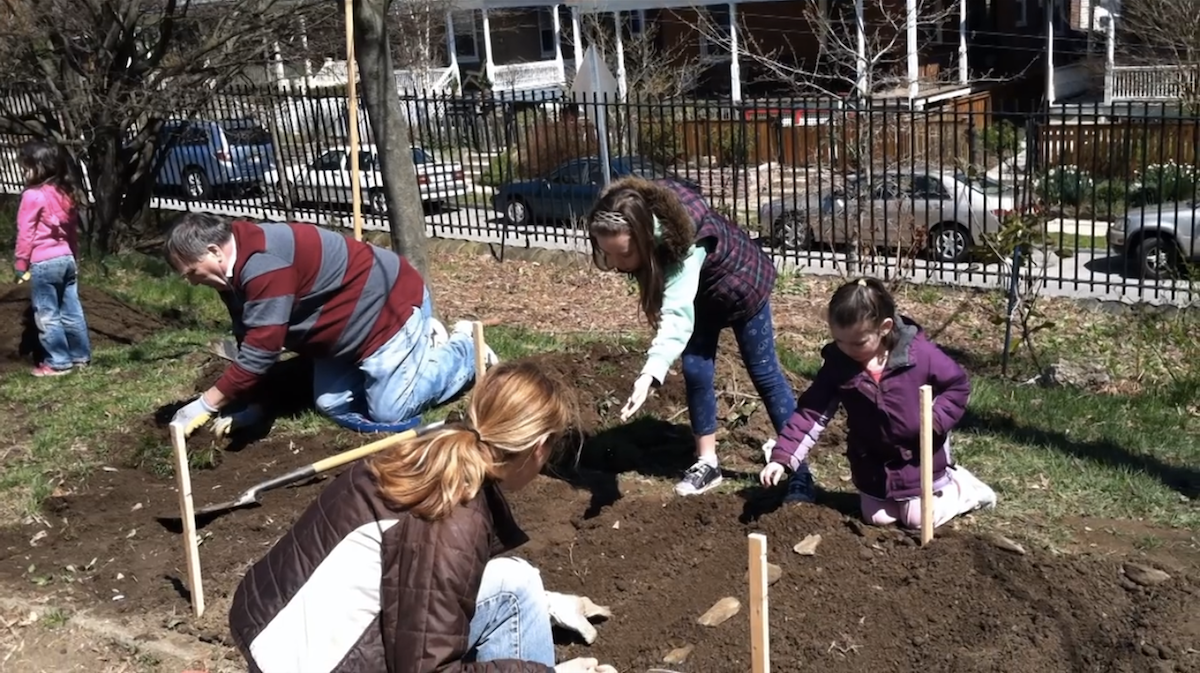Putting the play back in K(indergarten)

Part of the kindergarten center plan at Jenks in Chestnut Hill is to include a gardening area for students. (Courtesy of the Friends of J.S. Jenks)
One of the most recent viral stories revolves around a letter from a principal in Elwood, New York to parents of kindergarten children.
In the letter, the principal, along with the school’s four kindergarten teachers, announce their decision to cancel the annual kindergarten show.
The reason? More time to focus on preparing the children for “college and careers.” (Yes, we’re still talking about the kindergartners).
To me, the letter seems like a not-so-subtle swipe at the much-maligned Common Core. But sadly, kindergarten as preparation for anything but being five or six years old is far from a new phenomenon.
For the last decade or so, largely in response to No Child Left Behind, kindergarten has increasingly become “the new first grade.” Children are expected to read and write at advanced rates before they can even get through the school day without a nap.
Yet even with the increasing demands of the Common Core, two Philadelphia Public Schools are swimming against the tide. Instead of cramming more “time on task” into the kindergarten schedule, these schools are doing something revolutionary.
They’re adding more time to play.
A tale of two schools
Play is making a comeback at John S. Jenks Elementary School in Chestnut Hill. Jenks is currently undergoing a fundraising campaign to re-imagine their kindergarten space.
The new kindergarten center will have more open class space for “play centers,” including a Lego table, train track design, and a puzzle table.
Principal Mary Lynskey sees a weaving together of play and learning. “It is no secret that children have a natural curiosity. Children need the freedom to explore and play. The opportunities presented by these centers allow children to try new things, solve problems, invent, create, test ideas and explore.”
But the idea of putting play back in Philadelphia kindergarten isn’t unique to Jenks. Mastery Charter Schools recently added “Play-in-K” as a “course” in their kindergarten program, right alongside reading and mathematics.
Mastery’s model is drawn from the Tools of the Mind program where students collaborate on a “play plan,” play in centers together for a sustained amount of time, clean up, and then reflect back on how it went.
Jasmine Landry, Director of Elementary Program for Mastery, reports that students are benefitting from the new program. “Students are showing improved social skills. They are better able to manage their emotions and problem-solve with their peers. They’re demonstrating improved language skills, and since they have more time to talk and ‘play pretend’ with their peers, they are able to expand their vocabularies.”
Whether the benefits are academic, social, or emotional, this movement back to play in kindergarten seems to be spreading.
Maybe instead of kindergarten being the new first grade, play is becoming the new kindergarten. Or was that the old kindergarten?
WHYY is your source for fact-based, in-depth journalism and information. As a nonprofit organization, we rely on financial support from readers like you. Please give today.

